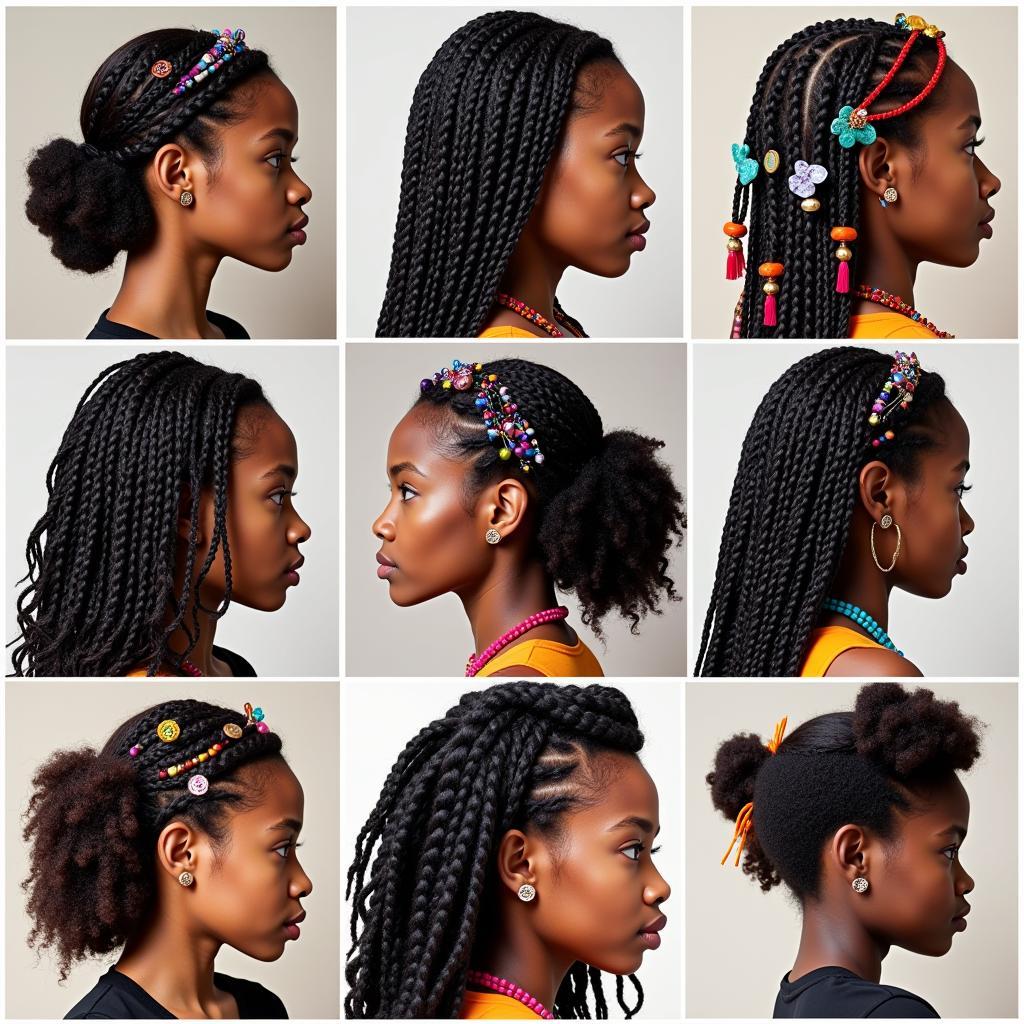About African Stencil Printing: A Journey Through Art, Culture, and History
African stencil printing is a captivating art form that has been a part of the continent’s cultural heritage for centuries. From ancient cave paintings to modern-day textiles, stencils have been used to express creativity, communicate stories, and preserve traditions. This article delves into the fascinating world of African stencil printing, exploring its history, techniques, cultural significance, and its ongoing evolution.
A History of Stencil Printing in Africa
Stencil printing has a long and rich history in Africa, dating back thousands of years. Evidence of early stencil techniques can be found in ancient cave paintings in countries like Namibia, South Africa, and Algeria. These paintings, often depicting animals, humans, and spiritual symbols, were created using stencils made from natural materials like leaves, bark, or animal hides.
Early Forms of Stencil Printing
The use of stencils in Africa also played a significant role in the development of various crafts and textile traditions. In West Africa, for instance, stencil printing was employed to create vibrant patterns on fabrics like mudcloth. This technique involved using stencils made from wood or metal to apply dye to the fabric, resulting in intricate designs that were often imbued with spiritual or symbolic meanings.
Stencil Printing in Modern Africa
Today, stencil printing continues to be a vital part of African art and culture. It has evolved significantly, incorporating modern materials and techniques while maintaining its rich heritage. Many contemporary African artists use stencil printing as a powerful medium to explore social issues, express personal narratives, and celebrate their cultural identity.
Techniques of African Stencil Printing
African stencil printing encompasses a diverse range of techniques, each with its unique history and aesthetic. Here are some prominent methods:
- Hand-Cut Stencils: Traditional methods often involve hand-cutting stencils from materials like wood, metal, or even leaves. These stencils are then used to apply dye, paint, or other materials to a surface.
- Block Printing: Similar to stencil printing, block printing involves using a carved wooden block to create patterns on fabric. These blocks are often made with intricate designs, and the printing process requires careful alignment and pressure.
- Screen Printing: This modern technique utilizes a mesh screen to create stencils. Ink is applied to the screen, and then the design is transferred onto the fabric. Screen printing is widely used for large-scale production, making it suitable for commercial purposes.
Cultural Significance of Stencil Printing
Stencil printing in Africa holds profound cultural significance, acting as a powerful tool for storytelling, visual communication, and preserving heritage.
Storytelling Through Patterns
The intricate patterns and designs created through stencil printing often convey stories and narratives that are deeply rooted in the cultural heritage of different African communities. They can represent ancestral beliefs, spiritual traditions, historical events, and even everyday life.
“The designs are like stories, whispered through the generations,” says Nana Kofi, a renowned Ghanaian artist. “Each symbol, each line, holds a meaning, a memory, a truth.”
Marking Identity and Belonging
Stencil printing plays a vital role in marking identity and belonging in various African cultures. The use of specific patterns and colors often signifies tribal affiliation, social status, or even geographical origins.
“My grandmother taught me to make these patterns,” says Amina, a young textile artist from Mali. “They tell the story of my people, of where I come from, and who I am.”
Transmission of Knowledge
Stencil printing acts as a powerful tool for the transmission of knowledge and cultural practices across generations. The intricate designs are often passed down from elders to younger generations, ensuring the preservation of their unique traditions and heritage.
Stencil Printing: A Thriving Contemporary Art Form
Despite the challenges of globalization and cultural homogenization, stencil printing in Africa continues to thrive as a vibrant contemporary art form.
Modern Interpretations
Contemporary African artists are pushing the boundaries of stencil printing, exploring new materials, techniques, and concepts. They are incorporating digital tools, experimenting with mixed media, and incorporating modern themes into their works.
“The power of stencil printing lies in its ability to connect the past with the present,” says Professor Omotola, a leading art historian. “It allows us to explore our roots, celebrate our identity, and create something truly new and exciting.”
Global Recognition
Stencil printing is gaining recognition on a global scale, attracting attention from art collectors, curators, and institutions worldwide. The vibrant colors, intricate patterns, and cultural significance of African stencil printing are captivating audiences across continents.
Conclusion
African stencil printing is a testament to the enduring power of art, culture, and tradition. It represents a rich tapestry of stories, beliefs, and expressions that have been passed down through generations. As this captivating art form continues to evolve, it serves as a powerful reminder of the vitality and resilience of African culture in a rapidly changing world.
FAQs
1. What are some examples of traditional African stencil printing techniques?
Traditional African stencil printing techniques include hand-cut stencils, block printing, and screen printing.
2. What are some common materials used for creating stencils in Africa?
Common materials used for creating stencils in Africa include wood, metal, leaves, and animal hides.
3. How does stencil printing contribute to the preservation of African cultural heritage?
Stencil printing contributes to the preservation of African cultural heritage by transmitting knowledge and traditional practices across generations.
4. What are some contemporary trends in African stencil printing?
Contemporary trends in African stencil printing include the incorporation of digital tools, experiments with mixed media, and the exploration of modern themes.
5. Where can I find examples of African stencil printing?
You can find examples of African stencil printing in museums, galleries, and online platforms dedicated to African art and culture.
6. Is African stencil printing still practiced today?
Yes, African stencil printing is still practiced today, both as a traditional art form and as a contemporary art form.
7. What are some of the challenges faced by African stencil printing in the modern era?
Some challenges faced by African stencil printing in the modern era include the pressures of globalization, cultural homogenization, and the need to adapt to evolving technologies.

